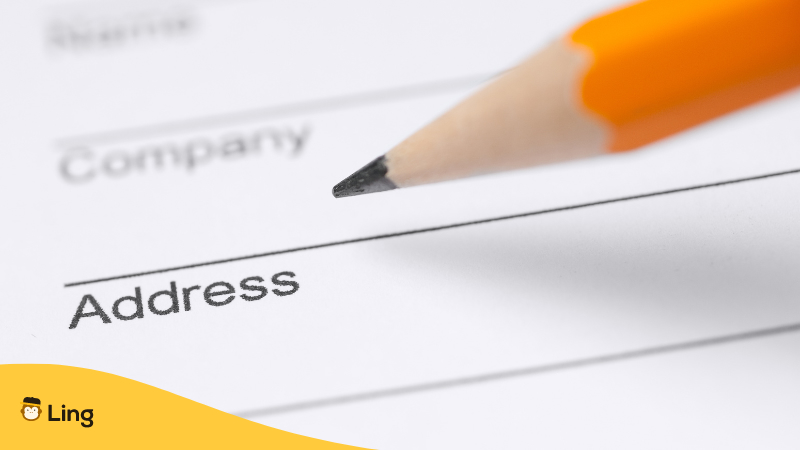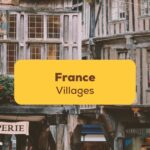Imagine this: You’ve just landed in Portugal, the sun is shining on your face, you’ve just had a great “espresso” and the famous “Pastel de Nata,” and you’re ready to head to your Airbnb… but wait, you don’t know how to read Portuguese addresses! Furthermore, you just ran your phone’s battery out watching a movie on your flight, and you can’t use Google Maps!
Don’t let this happen to you; follow this guide, and I’ll help you navigate Portugal’s streets like a pro!
How To Say The Word “Address” In Portuguese
First things first, let’s learn how to say the word “address.” There are a couple of ways you can say this word in Portugal, but the most common is “Morada.”
Listen to the pronunciation below:
There are so many important words you may want to explore, so check this Useful Guide To 50+ Basic Portuguese Words if you want to learn more words in Portuguese.
Useful Phrases When Asking For Directions
Now you should learn a few basic phrases to ask someone for directions or to tell them your address.
- De onde és? (Where are you from?)
- Qual é a tua morada? (What is your address?)
- Eu moro em… (I live in…)
- Estou perdido. (I’m lost.)
- Sabe-me dizer a direção para… (Do you know the directions to…)

What Does An Address In Portugal Look Like?
In Portugal, the addressing system is made based on a sequential numbering of houses in each street. You begin by naming the type of street and then its name, followed by the house number, the floor, and the apartment door. The postal code, region, and town or city designation are added at the end of the address.
But we’re getting ahead of ourselves: Let’s first talk about each one of the previous elements and then use them to build our address.
Street Types And Names
Let’s start from the beginning: the first part of any Portuguese address is the street type and name. This is the main identifier of any street in Portugal.
Saying the correct type of street is very important in Portugal since there are different street types that hold the same name but are located in completely opposite parts of the city.
I used to live in the street in Lisbon called “Rua das Flores,” however when I ordered something to be delivered home, sometimes the address written would say “Av. das Flores,” which, funny or not, is located on the opposite side of the city!
In the following table are the most common street types and their abbreviation.
| English | Portuguese | Abbreviation |
| Street | Rua | R. |
| Avenue | Avenida | Av. |
| Square | Largo | L. / Lg. / Lgo. |
| Plaza | Praça | P. / Pr. / Pç. |
| Narrow | Travessa | Tv. |
| Alley | Beco | Bc. |
| Paved Thoroughfare | Calçada | Cc. / Cç. |
| Boulevard | Alameda | Al. |
| Stepped pedestrian street | Escada | Esc. |
| Road | Estrada | Est. / Estr. |
| National Road | Estrada Nacional | EN |
| Public Garden | Jardim | Jrd. |
| Allotment | Loteamento | Lt. |
| Park | Parque | Pq. |
| Yard | Pátio | Pto. |
| Small Plaza | Praceta | Pct. |
| Roundabout | Rotunda | Rot. |
Street names in Portugal are usually attributed to important personalities not only for Portugal but around the world, like doctors, writers, soccer players, and even saints.
House Numbers
Now that we can narrow down our flat location to a street type and its name, we need to identify the house. In Portugal, houses are numbered sequentially with odd and even numbers on opposite sides of the street. On one side of the street, you may find houses 1, 3, 5, and 7, while on the other side are sequentially 2, 4, 6, and 8. These numbers in Portuguese Addresses are presented after the street type and its name.
For example, if you live in the house numbered 40 in “Av. da Liberdade” then you should write:
“Av. da Liberdade 40”
Floor Numbers
Floor numbers are usually represented by numbers and are written after the house number, separated by a dash. For example, if you live on the second floor of “Av. da Liberdade 40” you should write:
“Av. da Liberdade 40-2”
Exceptions to the numbered system are the ground floor that is written “Rés-do-chão” or “R/C” in Portuguese and basement houses that are called “Cave” or “Cv.” In this case, a basement house should be written
“Av. da Liberdade 40-Cv”
Apartment Doors Identifiers
We’ve reached our floor, and now we need to know in which apartment our friends are! The majority of apartment buildings in Portugal have only 3 apartments per floor, and the convention to identify them is not by using a letter or a number like in most countries. Instead, they are identified according to the direction you have to turn coming from the staircase.
If you come up the stairs and you turn right, your address will say “Direito” or “Drt.” if you turn left, your address will say “Esquerdo” or “Esq.” and if you go straight, your address will say “Frente” or “Frt.” Sounds easy, right? So imagine you live in the left house on the second floor of “Av. da Liberdade 40”, you should write your address like:
“Av. da Liberdade 40-2Esq.”
However, sometimes apartment buildings have more than 3 apartments per floor, and in these cases, doors are identified by numbers or letters. So if you live in apartment C on the third floor of “Av. da Liberdade 40”, you should write:
“Av. da Liberdade 40-3C.”

Post Code For Portugal
Although we thoroughly detailed our address with street type and name, house number, floor, and apartment door, there is still a chance we are describing a road in a different city in Portugal.
Postal codes (or “Código Postal” in Portuguese) are unique identifiers that locate your postal location within Portugal. This code, also known as your postal address, has 7 digits and the format XXXX-XXX. The first number of postal codes identifies the region of Portugal (Portugal has nine postal regions, so the postal codes start with the numbers 1 to 9). Following is the list of Portugal’s postal codes by region:
| Address Number | Region |
| 1XXX-XXX | Greater Lisbon region |
| 2XXX-XXX | Setúbal city, Leiria and Santarém regions |
| 3XXX-XXX | Coimbra, Aveiro and Viseu regions |
| 4XXX-XXX | Porto, Braga and Viana do Castelo regions |
| 5XXX-XXX | Vila Real and Bragança regions |
| 6XXX-XXX | Guarda and Castelo Branco |
| 7XXX-XXX | Setúbal, Portalegre, Évora and Beja regions |
| 8XXX-XXX | Algarve |
| 9XXX-XXX | The islands of Portugal’s Azores archipelago and Madeira |
How To Write A Portuguese Address
Now you’re ready to put it all together and write full addresses.
Here is an example:
- Street: Av. da Liberdade (“Av.” as short for “Avenida” or Avenue)
- House Number: 245
- Floor: 1
- Apartment Door: A
- Postcode: 1250-142
- Region: Lisboa
- City: Lisboa
With this information, the address can be written as
Av. da Liberdade nº245-1A, 1250-142 Lisboa, Lisboa, Portugal
Simpler than you thought, right? Now you can send a package wherever you may want in Portugal, go to that hidden spot you wanted to go to, or simply return home after a fully packed day exploring Portugal!
Cheatsheet To Write Down Portuguese Addresses
- Street Type
- Street Name
- House Number
- Floor
- Apartment Door
- Post Code
- Region
- City
- Country

Learn More About The Portuguese Language!
Whether you’re just passing by or living in Portugal, learning how to write and say your address is just the first step towards having a blast in this incredible country! There is so much to learn about Portuguese that will help you connect with locals, ask for directions, or just order your favorite food!
Ling app is a language learning app that will help you master the Portuguese language spoken in over 9 countries and many other beautiful languages worldwide. This app has practical, interactive, and concise lessons that will help you learn your favorite language in as little as 15 minutes per day! Want to see how it works? Download it today from the Play Store or App Store to see the difference!






















